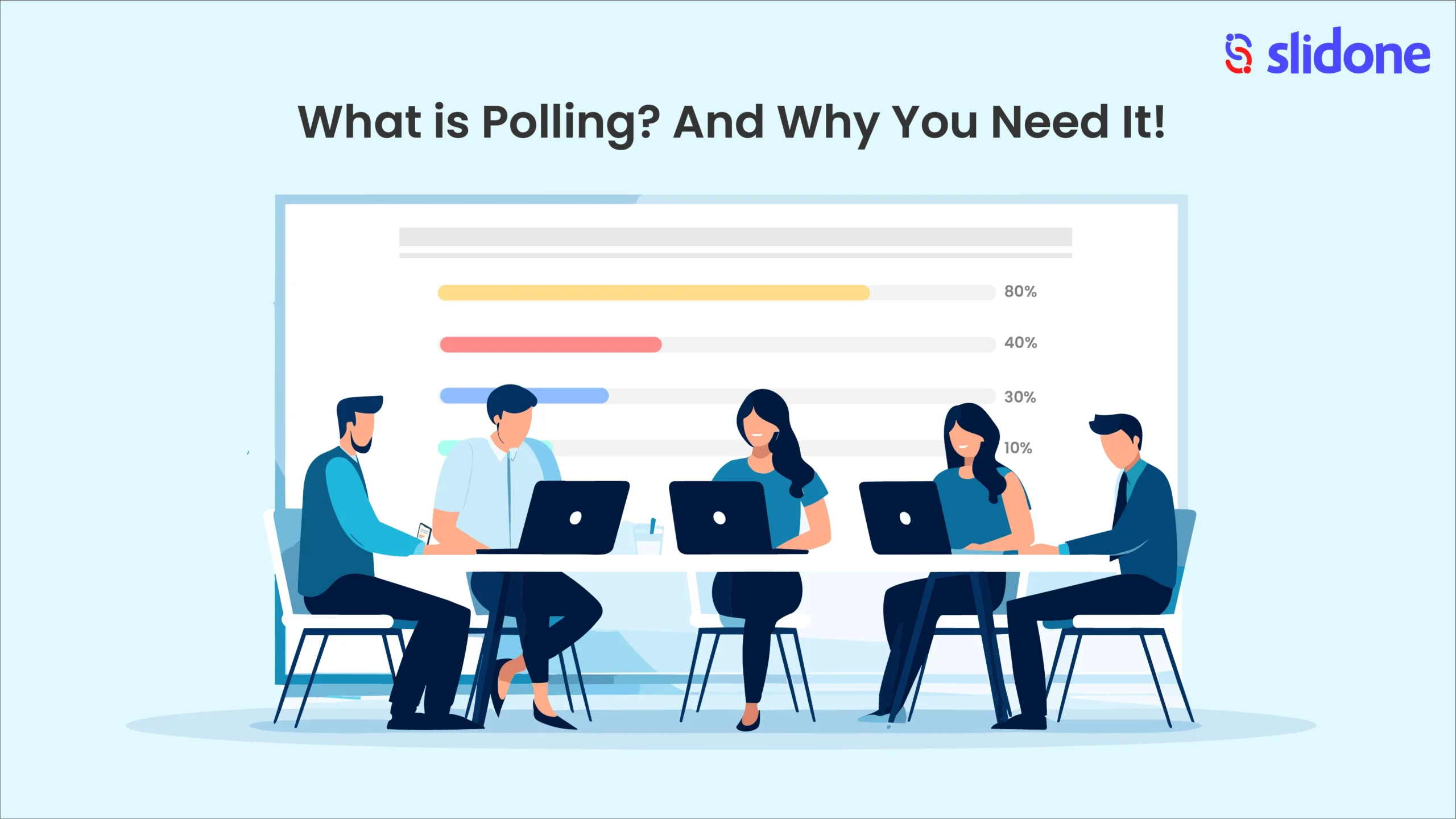Have you ever presented something and wondered if everyone was paying attention? Many people face this challenge. It’s hard to know if your audience understands when you’re trying to keep things interesting. That’s where polling comes in! It’s like a quick survey during your presentation. With polling, you get instant feedback, making your presentations more interactive and engaging. So, exactly what is polling? And why do you need it? Let’s break it down. Polling is when you ask your audience questions during your presentation. It helps you understand if they’re following along and if they’re interested. Plus, it encourages participation and makes your audience feel involved. In short, polling is a game-changer for presentations, making them more enjoyable and effective for everyone involved.
What is Polling?
Online interactive polling is a tool to get instant opinions from people. It’s like asking a question and getting answers right away. Imagine you’re in a class and your teacher asks, “Do you like chocolate or vanilla ice cream?” You and your classmates vote right there, and you see the results immediately. That’s online interactive polling! It helps you understand what people think about different things quickly. It’s handy for teachers, presenters, or anyone who wants to involve their audience in discussions. With online interactive polling, you can easily measure what people understand, start conversations, and keep everyone interested and participating. It’s like a fun way to learn what people think without waiting for a long time!
Why Use Polling?
Here’s why polling is a game-changer:
- Increased Engagement: Polling gets your audience involved. Instead of passively listening, they’re actively participating, which keeps them interested and focused.
- Better Understanding: You can quickly assess if your audience is grasping the information or needs more clarification.
- Real-time Feedback: Polling gives you immediate insight into your audience’s thoughts and opinions, allowing you to adjust your presentation on the fly.
- Fun and Dynamic: Polling can add a fun and interactive element to your presentations, making them more enjoyable for everyone.
How Polling Benefits Different Audiences
1. Teachers:
* Interactive Learning: Imagine polling your students to see if they understand a concept before moving on.
* Encouraging Participation: Use polls to spark debate and encourage critical thinking.
* Formative Assessment: Get immediate feedback on student understanding.
2. Students:
* Voice their Opinions: Polls can help students understand what their classmates are thinking, making them feel more connected to the topic.
* Contribute to the Discussion: It can also be a great way for students to contribute their opinions and insights.
* Active Learning: Engaging with polls can make learning more active and memorable.
3. Business Professionals:
* Meeting Engagement: During meetings, polls can help gauge consensus, spark discussion, and ensure everyone is on the same page.
* Decision Making: Use them to gather feedback on ideas, prioritize tasks, and make decisions together.
* Audience Participation: Encourage input and get a better sense of the team’s perspective.
Popular Polling Tools:
Here are some of the most popular and user-friendly polling tools:
- Slidone: A comprehensive platform for audience engagement, allowing you to create polls, Q&A sessions, and even run live quizzes.
- Mentimeter: This tool offers a variety of interactive formats, including word clouds, quizzes, and open questions.
- Kahoot! Known for its gamified approach, Kahoot! lets you create fun quizzes that are great for learning and review.
- Slido: This tool allows your audience to submit questions anonymously, making it a great way to facilitate Q&A sessions.
Conclusion:
Polling is a simple yet powerful tool that can significantly enhance any presentation, lecture, or meeting. By engaging your audience, gathering feedback, and making your presentations more dynamic, polling can help you achieve your goals and create a more impactful experience for everyone involved.
So, what are you waiting for? Try out some of these tools and see how polling can transform the way you communicate!



